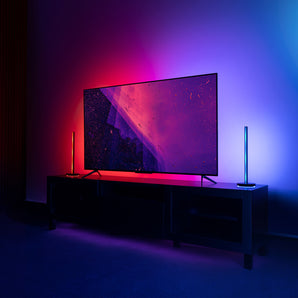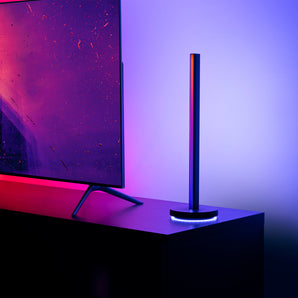Many lighting phrases seem similar but have radically distinct meanings in the lighting field. This can result in confusion and misunderstanding of lighting terminology. Indeed, two of the most often used terms, illuminance and luminance, are instances of words that are frequently wrongly interchanged. What is the difference between luminance and illuminance? Let’s read on!

What is luminance
Luminance measures the quantity of light emitted by, traveling through or reflecting off an object’s surface at an acute angle. It also shows the maximum light intensity that the human eye can see. Luminance, then, refers to how bright light is when it is emitted from or reflected off a surface. Luminance is a term used in the display industry to describe how bright a display is.
How to Measure Luminance
Luminance may be measured in a number of different ways and using a number of different units. Candela/square meter (cd/m2) is the SI unit for brightness in the International System of Units. The foot-lambert (fL) is a popular unit of measurement in the United States, with 1 fL equaling 3.426 cd/m2. Nit is a phrase that industry professionals often come across. In terms of brightness, the term “nit” refers to a non-SI unit called the cd/m2 rather than the watt.
A spectrophotometer may be used to measure color brightness. Using this device, you may accurately define an object’s color using L*a*b color space, which delivers three-dimensional numeric values. L*a*b’s “L” stands for the value of lightness. The scale goes from 100 (the brightest possible light) to -100 (the darkest possible light). Luminance meter such as the LS-150 or LS-160 Luminance Meter, or CS-150,CS-160 or CS-200 Luminance and Color Meters, can be used to measure luminance.
What is Illuminance
According to Wikipedia, a surface’s illuminance may be defined as the amount of light that strikes it in one square foot. As a result of the luminosity function weighting the wavelengths, it correlates with how bright a person perceives a light source. Luminous emittance, on the other hand, refers to the luminous flux emitted from a surface as a function of area. It describes the amount of light that a source may produce.
Illuminance was once known as brightness, however this causes confusion with other meanings of the word, such as to refer to luminance. Only nonquantitative references to physiological feelings and perceptions of light should be referred to as “brightness,” never as a quantitative description of a light source.
How to Measure Illuminance
Illuminance is a measurement of the total quantity of light emitted by a source. This light flux is expressed in lumens per meter square, abbreviated as lux.

Image source: KONICA MINOLTA
Photometers can be used to measure Illuminance this when they want to set up a photo session or test if a room is too bright or too dark. Some light meters are designed to work with specific types of illumination. When used to test sodium lighting, for example, one may yield more accurate findings.
When used to test sodium lighting, for example, one may yield more accurate findings.
You may also buy a “light meter” in the app stores on your mobile devices. Check the reviews first, since some of these apps are misleading.
Luminance and illuminance are two fundamental notions in physics. The quantity of light energy generated by a surface or an item is referred to as its luminance. The amount of light energy incident on a particular surface is referred to as illuminance. Luminance and illuminance are concepts that are commonly utilized in areas like physics, photography, chemistry, engineering, astronomy, astrophysics, and many more. Here is a summary of the difference between luminance and illuminance:
• Luminance is a quantity that describes the amount of light emitted by a surface, whereas illuminance is a quantity that describes the light that illuminates the surface.
• Luminance is affected by the nature and qualities of the surface, whereas illuminance is not affected by the nature of the surface.





